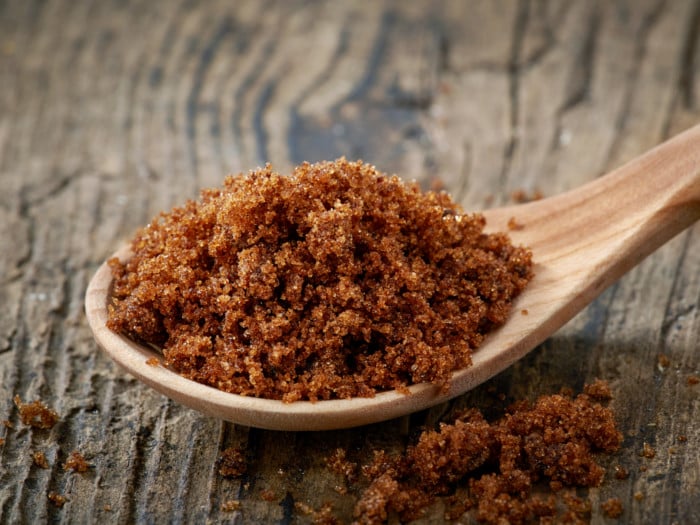Muscovado sugar is an unrefined form of cane sugar that retains all of its molasses, is higher in nutrients than white sugar. It has a rich brown color and a wet texture. The flavors are rich, reminiscent of toffee. This is why it is commonly found in rich sweets and desserts.
What is Muscovado Sugar?
Muscovado sugar is one of the most unrefined varieties of sugar that you can find on the market, meaning that it retains most of its molasses content. Molasses is the concentrated juice from sugarcane or sugarbeet (Saccharum officinarum and Beta vulgaris, respectively), once a certain amount of the sucrose has been removed. Also known as moist sugar, Barbados sugar, khand, and molasses sugar, this variety of looks similar to brown sugar, but is notably different in terms of its depth of flavor and overall nutrient content. [1]
Most varieties of muscovado sugar are completely unrefined and are made by adding lime to the juice of sugarcane. The mix is then cooked to remove the liquid, leaving behind the sugar to cool into crystals. Some varieties may have some of the molasses removed, which can create a ‘lighter’ variety of muscovado sugar. The unrefined variety will have a rich, dark-brown color and the consistency of wet sand. [2]

Muscovado sugar is one of the most unrefined varieties of sugar. Photo Credit: Shutterstock
Uses of Muscovado Sugar
While white sugar is added to countless products, muscovado sugar—often considered an artisanal sugar—has a much more interesting and deep flavor. It is mostly favored by bakers and pastry chefs. Boasting notes of toffee and caramel, this somewhat decadent sugar is ideal for desserts and meals that combine many complex flavors of sweet and savory.
As mentioned above, there is a spectrum of this specialty sugar based on the color—light or dark. The dark variety has a bold taste, almost reminiscent of licorice. This also makes it ideal for barbecue sauces and marinades, as well as salad dressings with a strong sweet element. Brownies and cookies also benefit from this sugar, which provides a slightly softer consistency, thanks to the molasses content. [3]
Light varieties of muscovado are more suited for caramel sauces, glazes and chutney, as the flavor will be milder. Thanks to the lower concentration of molasses, the dish can be cooked to a higher temperature. Even with slightly less molasses, the lighter type of muscovado will still deliver a more complex flavor profile than standard brown sugar. [4]
Muscovado Sugar vs Brown Sugar
White sugar is produced by introducing cane sugar to a centrifuge, effectively removing all the molasses, leaving the white crystalline residue behind. Brown sugar is made by adding molasses back into traditional white sugar. Muscovado sugar, on the other hand, is unrefined and will retain its original molasses content, providing a rich, gooey and dark-brown product.
The high molasses content in muscovado means that it is rich in the nutrients of the sugarcane plant, including magnesium, calcium, potassium, and iron. This is in addition to a variety of antioxidants, such as polyphenolic compounds. Brown sugar, while still containing some of these nutrients, will be lower in its level of molasses. This affects the concentration of these nutrients. [5]
While both brown sugar and muscovado maintain consistency of wet sand, somewhat crumbly but cohesive under pressure, they can have different effects on flavor. Muscovado is preferred when the sugar flavor is meant to be pronounced, while brown sugar is better at providing a complex foundation beneath other ingredients.
Substitutes of Muscovado Sugar
What do you do if you don’t have muscovado sugar? There are a number of easy replacements if you find yourself in a pinch while baking. There are quite a few unrefined brown sugars that are similar to muscovado but are produced in slightly different ways, such as, jaggery, panela, sucanat and rapadura. In many cases, the differences are negligible, and you won’t be able to tell the difference. Brown sugar can also be used in some situations, though the flavor and nutrient profile might suffer. You can also make your own form of muscovado by adding a good amount of pure molasses to white sugar and mixing them thoroughly. Generally, two tablespoons of molasses stirred into 1 cup of white sugar are enough to create a rich brown sugar. [6] [7]
While nothing will ever be quite as decadent or delicious as the original, there are some viable options if you are in desperate need of satisfying your sweet tooth!
